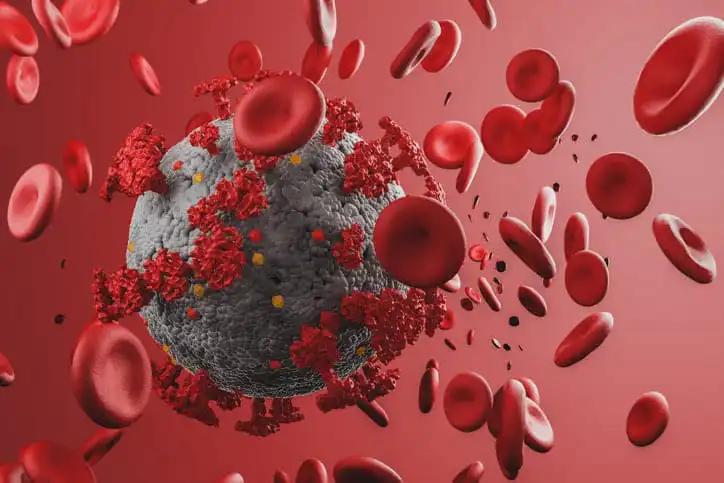KEY TAKEAWAYS
- The phase 3 IMpassion031 trial evaluated neoadjuvant atezo plus CT followed by open-label adjuvant atezo in pts with eTNBC.
- The study met its primary endpoints of improved pCR rate with atezo added to neoadjuvant CT in pts with eTNBC.
- The secondary endpoints of EFS, DFS, and OS were also achieved.
The placebo-controlled randomized trial involved patients (pts) with untreated stage II/III early-stage triple-negative breast cancer (eTNBC) and a primary tumor >2 cm. The pts were randomly assigned in 1:1 to either receive a placebo or atezolizumab (atezo) 840 mg q2w along with neoadjuvant chemotherapy (CT) (nab-paclitaxel 125 mg/m2 qw for 12 wk, followed by doxorubicin 60 mg/m2 + cyclophosphamide 600 mg/m2 q2w for 8 wk). Post-surgery, pts who were randomly selected to receive atezo were given open-label atezo 1200 mg q3w for 11 cycles. Pts who did not achieve pathological complete response (pCR) could have standard adjuvant systemic therapy (± atezo). Disease stage (II vs. III) and PD-L1 status (IC <1% vs. ≥1% by SP142) were the stratification factors. The ITT and PD-L1+ populations were evaluated for secondary efficacy endpoints, including event-free survival (EFS), disease-free survival (DFS), and overall survival (OS).
The study shows that after 39 months of median follow-up, atezo consistently demonstrated favorable EFS, DFS, and OS outcomes across various clinical subgroups. Notably, pts without pCR, 14/70 (20%) in the atezo arm vs. 33/99 (33%) in the placebo arm received additional adjuvant systemic therapy compared to those in the placebo arm, and capecitabine was the most commonly used drug (4/70 [6%] vs. 26/99 [26%]). Based on exploratory analyses, pCR strongly predicted positive long-term outcomes. Furthermore, our ctDNA analyses revealed that most pts showed clearance (including those with pCR) at the time of surgery. However, positive ctDNA at or after surgery was linked to a poorer prognosis. No occurrences of new safety issues or deaths related to atezolizumab treatment were reported.
The inclusion of atezo in CT for eTNBC has yielded a significant pCR advantage, leading to enhanced EFS, DFS, and OS. The long-term safety outcomes have remained consistent with earlier findings.
Source: https://oncologypro.esmo.org/meeting-resources/esmo-breast-cancer-congress/final-analysis-of-the-placebo-controlled-randomised-phase-3-impassion031-trial-evaluating-neoadjuvant-atezolizumab-atezo-plus-chemotherapy-ct-f
Clinical Trial: https://classic.clinicaltrials.gov/ct2/show/NCT03197935
Barrios, C.H., Harbeck, N., Zhang, H.A., Saji, S., Jung, K.H., Hegg, R., Koehler, A., Sohn, J., Iwata, H., Telli, M.L., Boileau, J., Punie, K., Dieterich, M., Assaf, Z.J.F., Xu, T., Liste Hermoso, M., Shearer-Kang, E., Molinero, L., Chui, S.Y., Mittendorf, E.A. Annals of Oncology (2023) 8 (1suppl_4): 101220-101220. 10.1016/esmoop/esmoop101220



